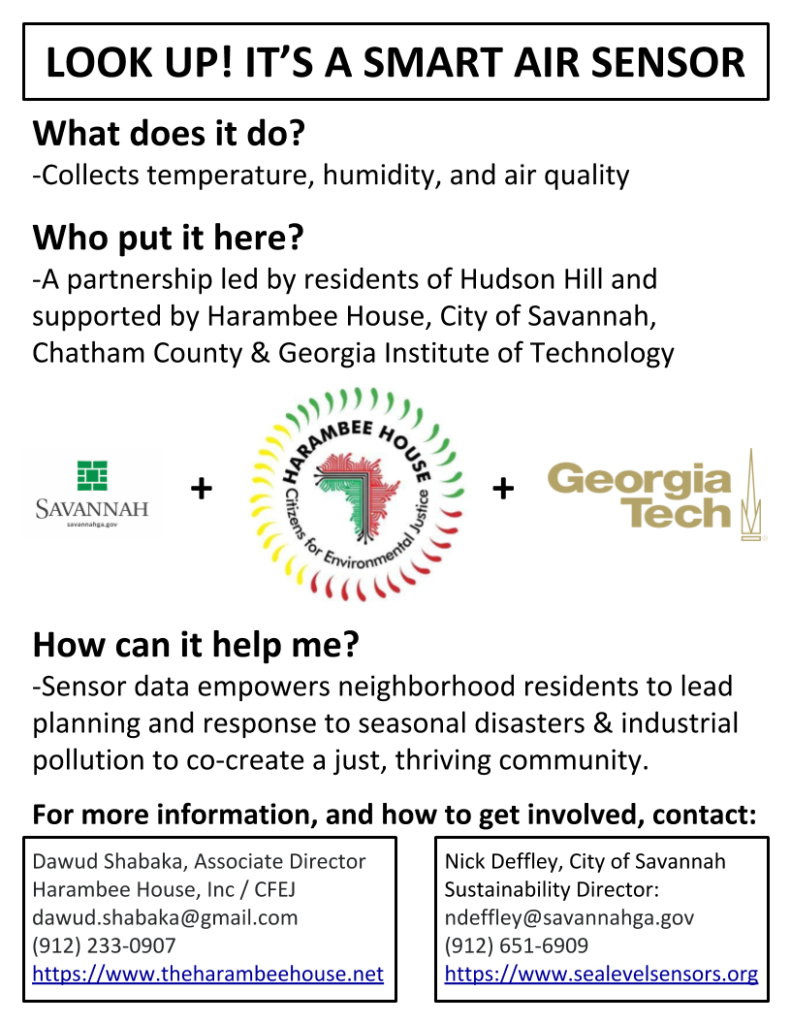Virtual Community Engagement During a Pandemic
Aug 5, 2020
My name is Alyson Laura, and this summer was my final semester of graduate school in the Sustainable Energy and Environmental Management (MSSEM) program within Georgia Tech’s School of Public Policy. I heard Dr. Cobb speak about the Smart Sea Level Sensor (SSLS) project through Drawdown Georgia. In my world of healthy communities, climate policy, and regenerative systems, these are the two most important research projects happening during my short time at Georgia Tech. I took advantage of all my opportunities exclusive to students and applied for a summer internship through the Serve Learn Sustain (SLS) internship program.
Receiving the invitation to join the SSLS team in Summer 2020 was a dream come true. It was a chance to participate in deeply inter-disciplinary work with awarded academic researchers, seasoned emergency management officials and professionals across local municipalities and national government agencies on climate policy research. It perfectly aligned with my career goals to be a climate leader in the Southeast.
My specific role was assigned to the community engagement workgroup. Our work focused on neighborhood scale emergency response and preparedness through the City of Savannah’s Office of Sustainability. The specific neighborhoods of Hudson Hill, Bayview, and Clearview are located near the Savannah Port, in an Environmental Justice (EJ) community. They partner with the EPA through their non-profit advocate, the Harambee House, and the City of Savannah.
With so many partners at the table with a vulnerable community, I knew I was in for a tough assignment. But no one could have predicted the challenges presented by the global pandemic that broke out just before my internship started.
There would be no more in person community engagement. Citizen science air quality monitoring training sessions were held virtually. Meet and greets with community leaders occurred over the phone. And my tour of the city sustainability office has to be done with a mask on.
Rather than hitting the streets, I was deep in documents and internet searches to quickly get up to speed on emergency preparation and hazard assessments. The community I engaged in was less community members and more academics and EPA experts. The humor of emergency planning during an emergency was not lost on our team and we marched on making progress behind the scenes.


Be the first to comment!